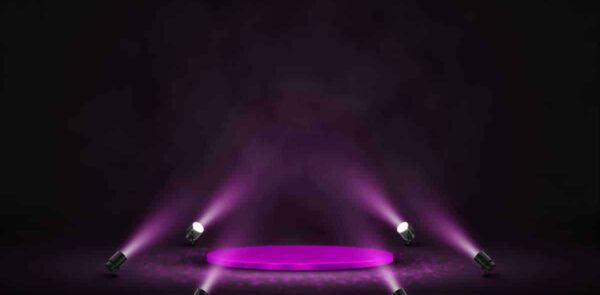
Jump to a section:
Organizing an event or conference takes a great deal of planning, budgeting, and coordination. But none of these efforts matter if no one actually shows up. That’s where a solid marketing strategy becomes crucial.
Events and conferences are not just about gathering people under one roof anymore. With hybrid options, live streaming, and on-demand content becoming more popular, the industry is more dynamic than ever. According to a 2022 report by Allied Market Research, the global events industry is expected to reach $2.33 trillion by 2026. This figure highlights the sheer scale of opportunities available to event organizers. Yet, that same scale also translates to increased competition—dozens of events vie for the attention of the same audience every year.
Key Challenges for Event and Conference Organizers
- Market Saturation: There are so many events, it can be hard to stand out.
- Budget Constraints: Marketing spend often competes with logistics, venue costs, and speaker fees.
- Diverse Audiences: Events frequently cater to multiple segments (e.g., sponsors, attendees, exhibitors), each requiring a unique marketing message.
- Shifting Technologies: Virtual and hybrid events demand tech-savvy marketing approaches.
By understanding these challenges, you can craft strategies that give you an edge over your competitors and resonate more effectively with your target demographic.
Crafting a Compelling Event Identity
Your event’s identity can be thought of as its “personality.” It’s the combination of your event’s purpose, theme, visuals, tone, and messaging. A clear, compelling identity makes it easier for potential attendees to remember and connect with your conference.
Defining Your Purpose
Before diving into promotional details, get crystal clear about why you’re hosting this event. Are you trying to educate, network, entertain, or all of the above? A well-defined purpose will guide all of your marketing decisions, from the visuals you choose to the platform you use to communicate with prospective attendees.
Crafting a Visual Brand
- Logo and Color Palette: Keep it consistent across your website, social media, and any event collateral like flyers or banners.
- Imagery and Typography: Choose fonts and images that reflect the style and theme of your event. For instance, a tech conference might use sleek, modern fonts and futuristic imagery.
Establishing a Cohesive Tone
Decide how you want to “sound” in your marketing materials. Is your event casual and fun, or formal and academic? A consistent tone helps build trust and familiarity, making it easier for people to engage with your content and recognize your event when they see it.
Leveraging Social Media in a Creative Way
Social media is typically the go-to platform for event marketing—but many organizers only scratch the surface of what’s possible. To truly stand out, you need to get creative and provide unique value in your social channels.
Going Beyond Standard Posts
It’s not enough to post “We have an event, here’s the date.” Engage your audience by sharing:
- Behind-the-Scenes Content: Give sneak peeks of speaker interviews or venue walkthroughs.
- Polls and Questions: Ask your audience about the topics they want to see covered, or which speaker they’re most excited about.
- User-Generated Content: Encourage participants to share their own photos or insights using a custom event hashtag.
Live Streams and Interactive Sessions
Platforms like Instagram Live, Facebook Live, or LinkedIn Live let you host short sessions with speakers or sponsors leading up to the event. This not only creates excitement but also offers a taste of what attendees can expect. You might:
- Host a “Speaker Q&A”: Invite your headline speaker to answer audience questions in real-time.
- Discuss Event Preparation: Share how you’re setting up the venue or the tech side of a virtual event.
Social Media Advertising
Paid ads can help you reach a more targeted audience. Leverage each platform’s targeting tools to zero in on specific job titles, interests, industries, or geographical areas. For instance, if you’re hosting a digital marketing conference, you can target people whose job titles include “marketing specialist,” “SEO manager,” or “social media coordinator.”
Innovative Content Marketing Approaches
Content marketing allows you to showcase the value of your event long before the doors open. By offering genuinely valuable content, you can build trust, position your brand as a thought leader, and entice potential attendees to learn more.
Event-Focused Blog Series
Instead of the usual one-off post, create a series that explores the main topics your conference will cover. If your conference is about sustainable business practices, run articles like:
- “Top 5 Sustainable Business Models for 2025”
- “How to Measure Your Company’s Environmental Impact”
- “Success Stories: Green Companies Making a Difference”
Include calls-to-action at the end of each article that direct readers to your event registration page.
In-Depth Ebooks and White Papers
Long-form content—like ebooks and white papers—can be powerful tools to demonstrate your conference’s depth of expertise. Consider partnering with a subject matter expert (maybe one of your speakers) to co-author a report. This not only lends credibility but also gives you content you can share weeks or months before the event.
Webinars Leading Up to the Event
Hosting online seminars can serve as a preview of your conference. For instance, if your event focuses on leadership development, you might host a free, 30-minute webinar titled: “5 Leadership Hacks to Transform Your Team.” At the end of the webinar, encourage viewers to register for the full conference to learn more.
Harnessing Influencer and Industry Leader Partnerships
Influencers aren’t just for fashion or travel brands. In the B2B space, industry leaders, prominent authors, and subject matter experts often function as influencers. They have an existing audience that trusts them, and they can significantly boost your event’s credibility.
Identifying the Right Influencers
Focus on thought leaders whose expertise aligns closely with your event topic. You’ll get more traction from someone who regularly speaks or posts about related ideas. Tools like LinkedIn Sales Navigator or influencer marketing platforms (e.g., BuzzSumo) can help you identify top voices in your field.
Collaboration Ideas
- Guest Blogging: Invite influencers to write a short article or blog post on your event website.
- Podcast Interviews: If you host a podcast, feature an influencer as a special guest, discussing insights that tie in with your event theme.
- Event Ambassadors: Offer them complimentary tickets or exclusive perks in exchange for promoting your conference.
- Live Sessions: Have them share a live announcement or “takeover” your social media accounts for a day to build anticipation.
Negotiating Win-Win Partnerships
Influencers will be more likely to champion your event if there’s clear mutual benefit. Maybe they’re launching a new book or consulting service—your conference could be the perfect platform for them to reach potential clients. Be transparent about expectations, deliverables, and compensation to form a respectful, fruitful relationship.
Building Buzz with Experiential Marketing
Experiential marketing is about creating immersive, memorable experiences that engage your audience on a deeper level. Events and conferences naturally lend themselves to experiential marketing because they’re already face-to-face (or virtual) gatherings. All you need is a creative twist to make the experience unforgettable.
Interactive Displays and Demonstrations
- Product Showcases: If your conference includes sponsors or exhibitors, encourage them to build interactive booths where attendees can test products firsthand.
- VR/AR Experiences: Depending on your budget, virtual or augmented reality can captivate attendees and generate buzz. Imagine a VR setup at a tech conference where attendees can “tour” a factory or test new technology in a simulated environment.
Themed Networking Activities
Networking doesn’t have to be awkward small talk over coffee. Reinvent networking by adding a theme or game element:
- Speed Networking: Use a bell to rotate participants every two minutes.
- Scavenger Hunts: Encourage people to explore different areas of the venue and engage with each other to find “clues.”
- Icebreaker Games: Simple question prompts, such as “What’s the best business advice you’ve ever received?” can spark meaningful conversations.
On-Site Social Media Stations
Set up visually appealing backdrops or interactive installations designed to be Instagrammable. Provide props or signs featuring your event’s hashtag. When attendees share these moments on social media, it creates organic buzz and acts like free advertising for your event.
Utilizing Email Marketing to Drive Registrations
Despite the popularity of social media, email marketing remains one of the highest ROI channels. According to Campaign Monitor, every $1 spent on email marketing typically returns around $36 on average. For events, a targeted email campaign can be instrumental in reminding prospects to register, while also keeping existing attendees engaged.
Segmenting Your Audience
A one-size-fits-all email blast often falls flat. Segment your email list based on criteria like:
- Past Attendees: They might need less convincing but would appreciate loyalty discounts or exclusive sessions.
- Leads vs. Current Registrants: Leads need reasons to sign up; current registrants need logistics and updates.
- Industry or Role: Tailor subject lines and content to the specific interests of different professional roles.
Personalizing Your Message
Use the recipient’s first name in the subject line or body of the email. Referencing previous conferences they attended (if applicable) can also make the email feel more personal. The more relevant the email seems, the higher the open and click-through rates you’ll see.
Email Sequence Strategy
Plan out an email sequence leading up to the event:
- Early Bird Announcement (8–10 weeks prior): Offer discounted pricing.
- Speaker Reveal and Agenda Highlights (6–8 weeks prior): Focus on exciting details.
- Last Call for Early Bird (4–6 weeks prior): Create urgency.
- Final Agenda (2–4 weeks prior): Share session topics and times.
- Event Logistics (1 week prior): Remind attendees about location, travel, or login information if it’s virtual.
Use clear calls-to-action and compelling copy in each email to keep your audience intrigued and drive them to register.
Tech-Driven Engagement Tools
In a digital world, leveraging the right technology can set your event apart. Attendees appreciate convenience, and innovative tech solutions can significantly enhance the overall experience.
Event Apps
A dedicated event app can house all essential information:
- Schedule: Let attendees customize their own agenda.
- Speaker Bios: Feature photos, bios, and even contact details if speakers permit.
- Live Polls and Q&A: Increase audience engagement during sessions.
Chatbots
Implementing a chatbot on your event website can handle frequently asked questions and direct visitors to relevant pages. This not only improves user experience but also frees up your team to focus on more complex inquiries.
NFC and RFID Technology
For in-person conferences, NFC (Near Field Communication) or RFID (Radio Frequency Identification) badges can speed up check-in, track attendee movement for safety, and even facilitate networking by exchanging digital business cards when two attendees tap badges.
Virtual and Hybrid Solutions
With virtual events on the rise, look for platforms that support:
- Breakout Rooms: For smaller group discussions.
- Interactive Sessions: Features like whiteboarding or Q&A management.
- Gamification: Points, badges, or leaderboards for engagement.
Encouraging Word-of-Mouth and Referral Programs
Word-of-mouth marketing is often cited as one of the most trusted forms of promotion. When someone you know recommends an event, you’re far more likely to attend. So, how can you harness this organically?
Attendee Referral Incentives
Encourage your existing registrants to invite friends or colleagues with referral bonuses. This could be:
- Discounted Tickets: Offer 10–20% off for both the referrer and the new attendee.
- Free Upgrades: Provide VIP seating, exclusive meet-and-greets, or free workshops.
- Giveaways: Raffle off items like tech gadgets, books, or even future event tickets to those who bring in new attendees.
Utilizing Speaker Networks
Speakers often have their own following. Encourage them to share the event on their channels by giving them an exclusive discount code. This approach not only drives traffic but also makes the speaker feel more invested in your event’s success.
Turning Sponsors into Advocates
Sponsors, too, can become champions for your event. Provide them with pre-written posts, graphics, and unique codes so they can easily promote the conference to their network. The more they promote, the more visibility the event gains.
Measuring Success and Adapting Strategies
No marketing strategy is complete without measurement. Tracking the right metrics lets you refine your approach and drive better results in subsequent campaigns. After all, every event is a learning experience, and data-driven insights are key to improvement.
Key Metrics to Track
- Registrations: Total number of sign-ups, including a breakdown by ticket type (early bird, standard, etc.).
- Conversion Rate: The percentage of visitors to your site or landing page who end up registering.
- Social Engagement: Likes, shares, comments, and click-through rates.
- Email Performance: Open rates, click-through rates, and unsubscribes.
- Attendee Feedback: Post-event surveys to gauge satisfaction with content, speakers, and overall experience.
Analyzing and Learning
- Compare Against Benchmarks: How do this year’s metrics compare to last year’s event, or to industry averages?
- Identify What Worked: Did your social media ads bring in a significant percentage of registrations? Did email marketing outperform other channels?
- Pinpoint Weak Areas: Did a particular campaign fall flat? Did certain segments of your email list show low engagement?
Use these insights to iterate on your strategies. Maybe you’ll allocate a larger budget to social media next time or refine your messaging for a more targeted email campaign.
Keeping the Momentum Post-Event
Your marketing shouldn’t stop once the conference is over. Continue nurturing relationships with attendees:
- Send Recaps: Share event highlights, photos, or recordings of key sessions.
- Promote Next Year’s Event: Tease dates or themes for your next conference to keep attendees excited.
- Stay Connected: Encourage attendees to follow you on social media or subscribe to your newsletter for updates.
Final Thoughts
Marketing an event or conference requires creativity, strategy, and adaptability. By understanding the challenges unique to the event industry—such as fierce competition, budget limitations, and diverse audiences—you can develop innovative approaches that capture attention and drive registrations. Each tactic we’ve discussed, from influencer collaborations to experiential marketing, aims to create an engaging, memorable experience that goes beyond a typical promotional campaign.
When you successfully blend traditional marketing methods (like email campaigns) with new-age tactics (like VR demonstrations or social media takeovers), you’ll be able to engage a broader audience and give them compelling reasons to choose your event over others. Remember, data is your friend—continuous measurement and analysis will help you identify what resonates with your audience and how to refine your strategies.
Ultimately, your goal is to create a conference or event that not only meets your attendance targets but also leaves attendees talking about it long after it’s over. With the right marketing plan, you can ensure that your event stands out, feels personal, and provides genuine value to everyone who attends. Good luck, and here’s to the success of your next event!

